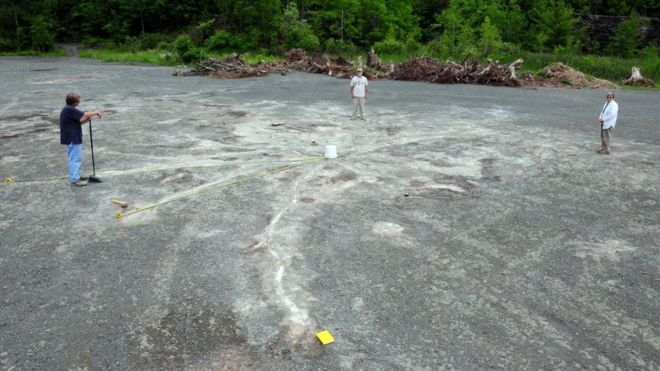The World’s Oldest Fossil Trees Have Been Discovered in New York

The World’s Oldest Fossil Trees Have Been Discovered in New York
You would easily assume that the Spiderweb features on the ground are just some ore to be extracted when you go through an abandoned quarry in Cairo, New York.
But this is a scientific goldmine in the trained eye — the intricate pattern is actually a massive 386 million-year-old fossilized forest. It is the earliest forest scientists have yet discovered.

Scientists started exploring the site in the foothills of the Catskill Mountains, in the Hudson Valley, around a decade ago. Since then, several research groups have carefully mapped 3,000 square meters of forest, containing some of the earliest types of trees.
This includes Cladoxylopsids — leafless trees with short celery-like branches and shallow roots that could grow to up to 10 meters in height — and Archaeopteris — ancient pine-like trees. The new study also identified a third type of tree that has yet to be described properly.
All three types of trees would have reproduced through spores rather than seeds — indicative of their ancient nature. The authors of the new study, which includes researchers from Binghamton University, New York State Museum, and Cardiff University, claim that the extensive network of trees would have spread from New York all the way to Pennsylvania around 386 million years ago.
This forest was one of the earliest in the world but even back then, trees exhibited a modern feature: long, woody roots that transported water and nutrients from the soil. Until this point in time, primitive trees only had ribbon-like, mostly unbranched roots that had to be constantly replaced as the tree above grew.
“It is surprising to see plants which were previously thought to have had mutually exclusive habitat preferences growing together on the ancient Catskill delta,” said co-author of the study Dr. Chris Berry from Cardiff University’s School of Earth and Ocean Sciences.

“This would have looked like a fairly open forest with small to moderate sized coniferous-looking trees with individual and clumped tree-fern like plants of possibly smaller size growing between them,” he added.
The site marks a transition in the planet’s history from a relatively barren landscape to a lush, green world covered in trees. In time, the success of trees would have soaked a lot of carbon dioxide (CO2), completely altering the climate and the ecosystem around them. Over just a few million years, the CO2 levels in the atmosphere dropped 15-fold, reaching levels similar to those recorded today.
“In order to really understand how trees began to draw down carbon dioxide from the atmosphere, we need to understand the ecology and habitats of the very earliest forests, and their rooting systems,” Dr. Berry said in a statement.
Eventually, the ancient forest in New York was wiped out by a flood, as evidenced by fish fossils found on the surface of the quarry.
The Cairo forest is only 2-3 million years older than the previous record-holder for the title of the world’s oldest forest, a site a Gilboa, also in New York State.
“These remarkable findings have allowed us to move away from the generalities of the importance of large plants growing in forests, to the specifics of which plants, in which habitats, in which types of ecology were driving the processes of global change. We have literally been able to drill into the fossil soil between the trees and are now able to investigate geochemical changes to the soil with our colleagues at Sheffield University,” Berry said.
“We are really getting a handle on the transition of the Earth to a forested planet.”
Subscribe to our newsletter!